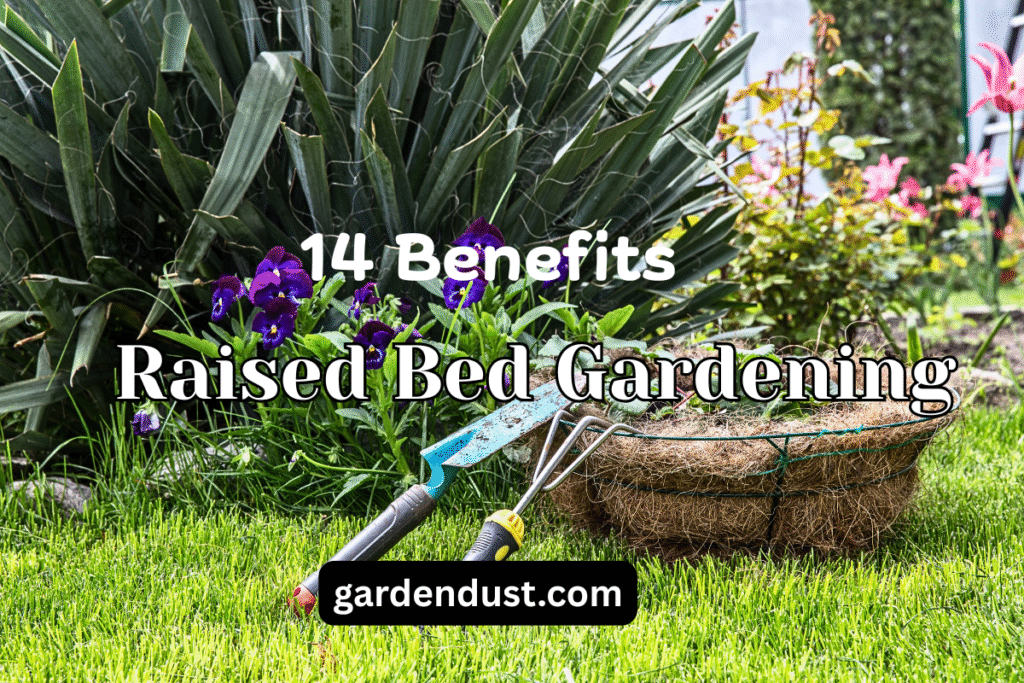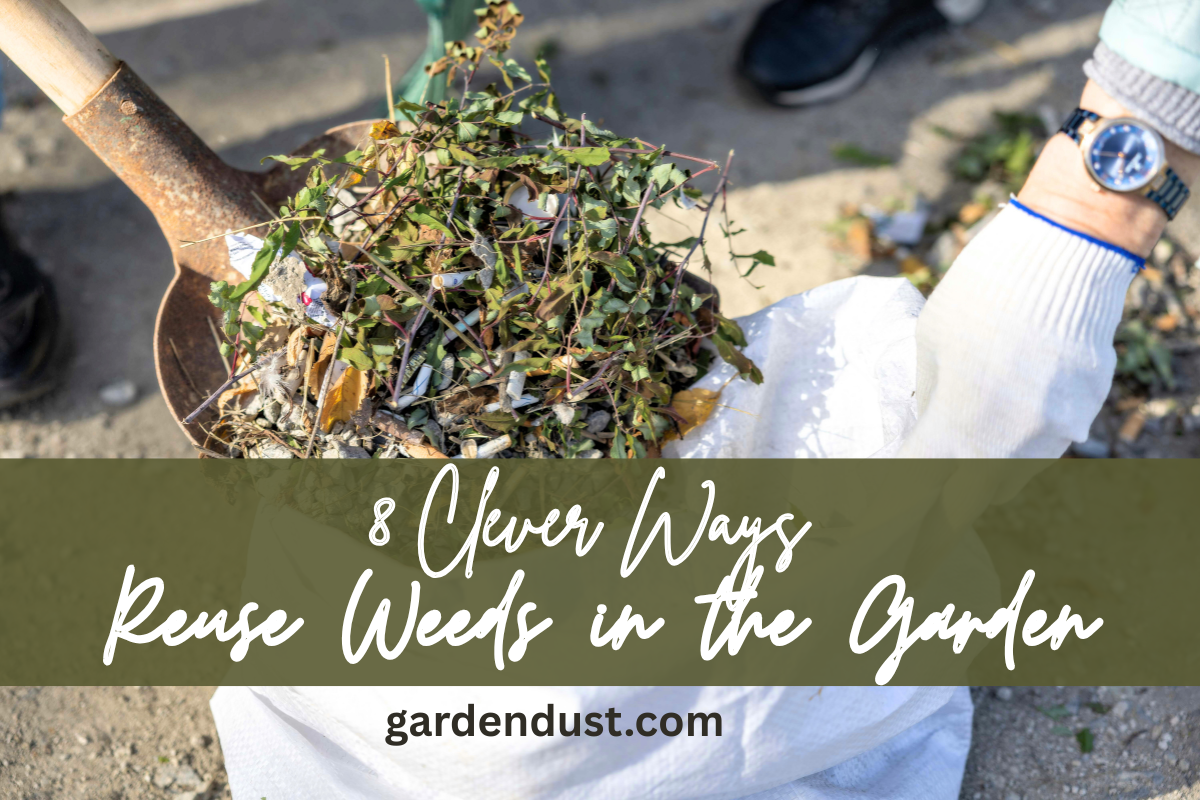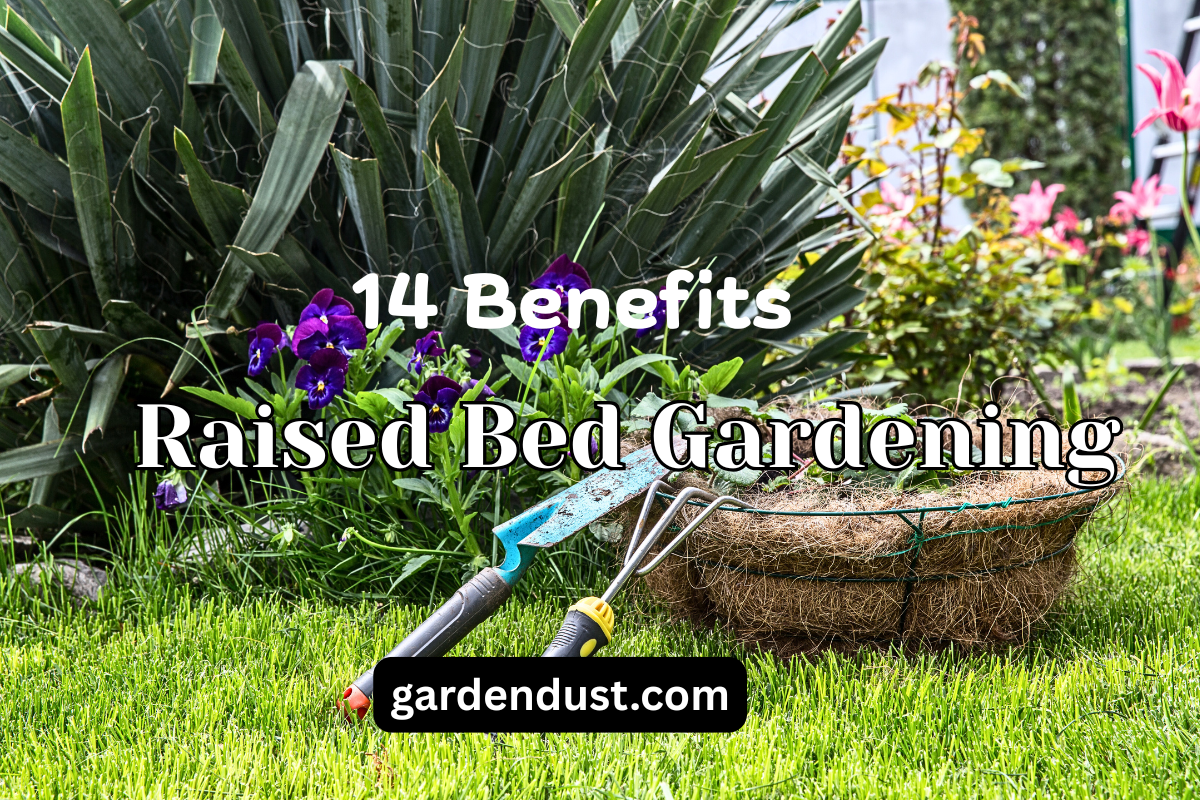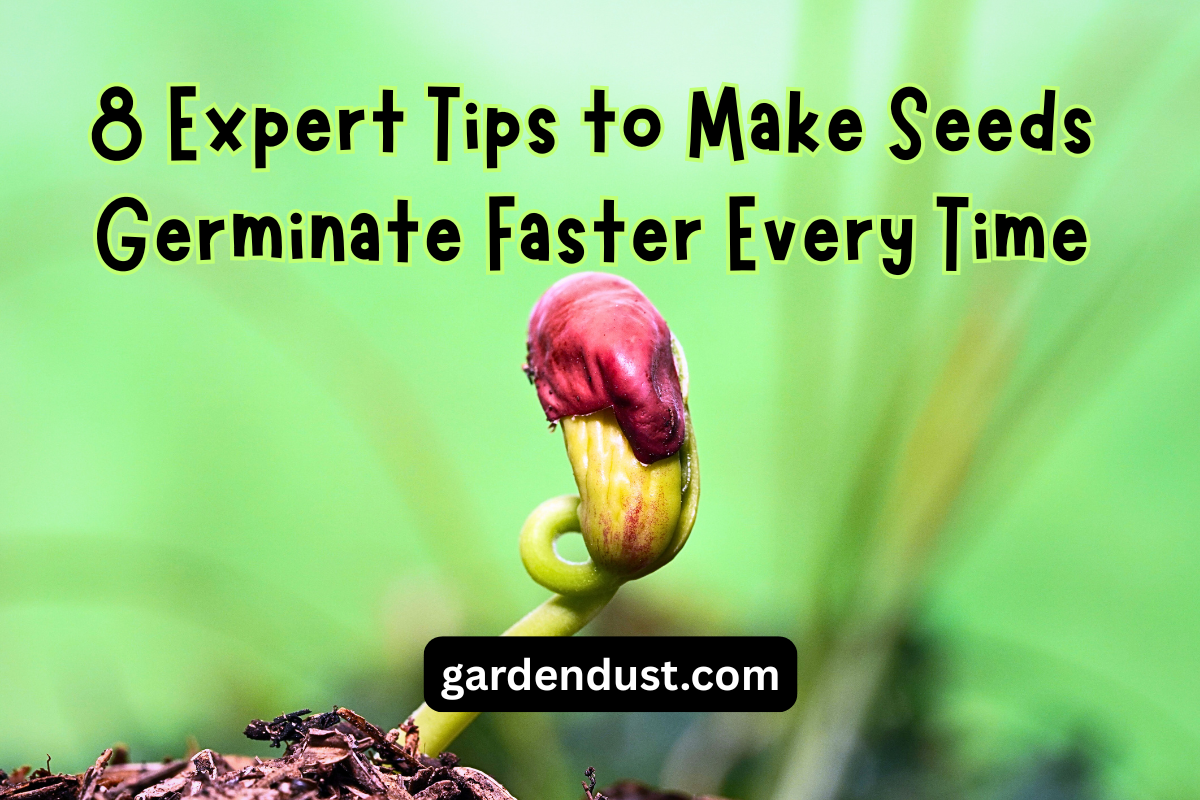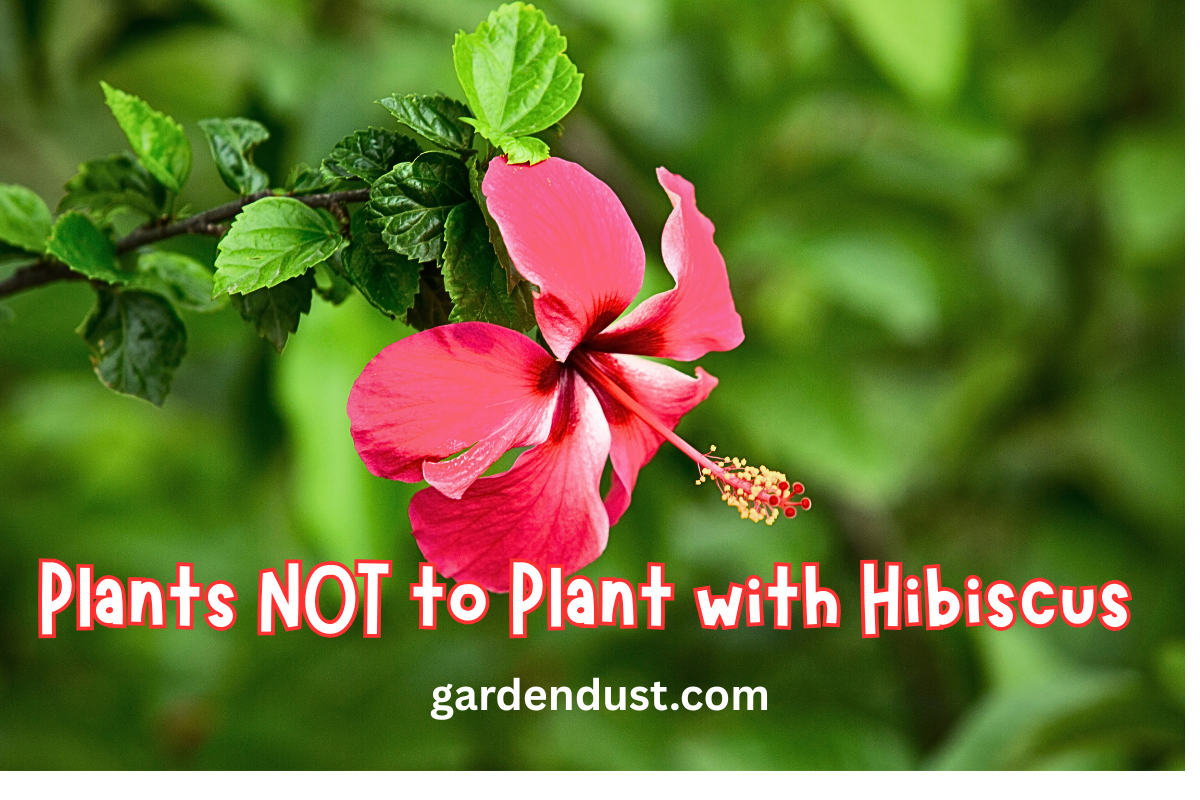Raised bed gardening has become increasingly popular among both beginner and seasoned gardeners—and for good reason. Whether you’re growing vegetables, herbs, or flowers, using raised beds offers numerous advantages that can improve plant health, productivity, and ease of maintenance.
In this comprehensive guide, we’ll explore 14 key benefits of raised bed gardening that make it one of the best methods for cultivating a thriving and manageable garden.
1. Improved Soil Quality and Control
One of the most significant advantages of raised beds is the ability to create and control the soil environment. Unlike traditional in-ground gardening, you’re not limited by native soil conditions, which may be rocky, clay-heavy, sandy, or nutrient-poor.
Why It Matters:
- You can mix the ideal blend of soil, compost, and organic matter.
- Better drainage and aeration help roots grow deeper and stronger.
- Soil compaction is minimized, promoting healthier plants.
- This is especially useful for urban or suburban areas where soil quality is often subpar or contaminated.
2. Better Drainage for Healthier Roots
Raised beds naturally offer superior drainage compared to in-ground gardens. Excess water drains more easily, reducing the risk of root rot and fungal diseases that thrive in soggy soil.
Added Bonus:
- You won’t have to worry as much during heavy rains.
- Plants like tomatoes, carrots, and garlic thrive in well-drained environments.
- For gardeners in wet climates, this benefit alone can make raised beds a game-changer.
3. Fewer Weeds to Fight
Raised beds typically have fewer weeds—especially when filled with clean soil and organic mulch from the start. This means less time weeding and more time enjoying your garden.
Weed-Reducing Techniques:
- Add a weed barrier (like landscape fabric) at the base of the bed.
- Use mulch or straw on top to prevent new weeds from sprouting.
- Densely plant crops to shade the soil and reduce weed germination.
- Controlling weeds becomes significantly easier, which is a huge advantage for busy gardeners.
4. Extended Growing Season
Raised beds warm up faster in the spring and retain heat longer into the fall, giving you an extended growing season. This is ideal for cool climates or early planting.
Why It Works:
- Soil above ground level is exposed to more sun.
- You can cover beds with row covers, cold frames, or plastic tunnels for insulation.
- It’s easier to plant earlier in the season without waiting for the ground to thaw.
- You can harvest sooner and potentially grow more crops in a single year.
5. Easier on Your Back and Knees
Raised beds reduce the need for bending, kneeling, or squatting, making gardening more accessible for older adults, people with physical limitations, or anyone looking to avoid strain.
Tip:
- Build your beds 12–24 inches high for comfortable access—or even higher for wheelchair gardening.
- Gardening becomes not only easier but also more enjoyable and ergonomic.
6. Increased Crop Yields
Because the soil in raised beds is looser, deeper, and richer in nutrients, plants grow faster and healthier—often producing bigger yields.
How This Happens:
- Improved root growth leads to more robust plants.
- Fewer weeds and pests mean more energy goes into growth.
- Intensive planting techniques like square foot gardening maximize space.
- The result? More food and flowers from a smaller area.
7. Better Pest and Disease Management
Raised beds make it easier to manage pests and diseases. Since the beds are isolated from the surrounding soil and can be easily monitored, issues can be identified and controlled quickly.
Advantages:
- You can install physical barriers like netting, row covers, or copper tape.
- Fewer soil-borne diseases spread from native ground soil.
- Pests like slugs, snails, and cutworms are easier to spot and manage.
- Raised beds create a defensible space for your plants.
8. Space Efficiency and Organization
Raised beds are ideal for small spaces or urban gardens. They help you grow more in less space by using vertical gardening and intensive planting methods.
Organizational Perks:
- Clean, contained spaces reduce mess and make paths easier to maintain.
- You can design beds in grid layouts, rows, or decorative patterns.
- Companion planting and crop rotation become easier to manage.
- Gardens become more visually appealing and easier to navigate.
9. Customizable for Any Location
One of the top benefits of raised beds is their flexibility. You can build them anywhere—over gravel, pavement, or poor soil—making gardening possible in places where traditional gardens wouldn’t work.
Popular Locations:
- Small yards
- Balconies (with shallow containers)
- Rooftops
- Driveways or unused corners
- Raised beds let you garden anywhere you have sunlight—even without land.
10. Improved Water Conservation
With proper planning and setup, raised beds can be more water-efficient than in-ground gardens. Water goes exactly where it’s needed, and mulching helps retain moisture.
Water-Saving Tips:
- Use drip irrigation or soaker hoses under mulch.
- Water in the early morning to reduce evaporation.
- Add organic matter to improve water retention.
- Raised beds help conserve one of the most valuable garden resources—water.
11. Easier Crop Rotation and Soil Management
Crop rotation is key to preventing soil nutrient depletion and disease buildup. Raised beds make rotation easier by compartmentalizing the garden into separate zones.
Benefits:
- Label or map out what was planted where each season.
- Add compost or amendments bed by bed, based on crop needs.
- Control soil pH and fertility for different beds if needed.
- This systematic approach keeps your garden healthier long-term.
12. Great for Kids and Beginner Gardeners
The contained structure of raised beds makes them the perfect place for kids or beginners to learn gardening. It’s easier to see and manage each plant, identify weeds, and observe progress.
Fun Ideas for Kids:
- Design a themed bed (pizza garden, rainbow veggies, pollinator flowers).
- Let them dig, plant, and harvest in their own mini raised bed.
- Use colorful markers and plant labels for learning.
- Gardening becomes a hands-on, joyful experience for the whole family.
13. Visually Appealing Garden Design
Raised beds add structure and visual interest to your garden space. With clean lines, defined edges, and organized layouts, they elevate the aesthetics of both small and large gardens.
Design Enhancements:
- Use wood, stone, metal, or recycled materials for custom looks.
- Build symmetrical patterns or geometric designs.
- Add trellises or arches for vertical height and beauty.
- Raised beds don’t just produce well—they also look beautiful year-round.
14. Long-Term Investment in Your Garden
Building raised beds may take some effort up front, but they pay off over time. A well-constructed bed can last 10–15 years or more with proper care.
Long-Term Value:
- Reuse the same bed structure year after year.
- Refresh soil and compost seasonally without starting from scratch.
- Enjoy improved results with each passing season as the soil matures.
- It’s a sustainable, productive, and rewarding way to garden for the long haul.
Tips for Getting Started with Raised Beds
If you’re convinced that raised beds are the way to go, here are a few beginner tips to ensure success from day one:
1. Choose the Right Location:-Pick a sunny spot with at least 6–8 hours of direct sunlight.
2. Size It Right:-Keep beds 3–4 feet wide so you can reach the center from either side. Length can vary.
3. Use Quality Materials:-Opt for untreated wood, galvanized metal, or composite boards that resist rot.
4. Fill with the Right Soil Mix:-Blend 50% topsoil, 30% compost, and 20% perlite or coarse sand for drainage.
5. Add Mulch:-Use straw, shredded leaves, or bark mulch to retain moisture and suppress weeds.
Common Raised Bed Gardening Questions
Q1: How deep should a raised bed be?
For most vegetables, 10–12 inches is ideal. Root crops like carrots may need 18 inches or more.
Q2: Can I put a raised bed over grass?
Yes! Mow the grass short, lay down cardboard or newspaper, then build your bed and fill it with soil. The grass will break down naturally.
Q3: What is the best material for raised beds?
Cedar and redwood are naturally rot-resistant woods. Metal and composite materials also last long and are low-maintenance.
Q4: Do I need to line the bottom of my raised bed?
It’s optional. You can use landscape fabric to prevent weeds or hardware cloth to stop burrowing animals like gophers.
Final Thoughts
Raised bed gardening combines functionality, beauty, and productivity into one powerful method. From better soil and higher yields to less weeding and easier maintenance, it’s no wonder gardeners across the world are switching to raised beds.
Whether you’re growing veggies in a small backyard or flowers on your patio, the benefits are undeniable—and lasting. With a bit of planning and creativity, raised beds can transform your gardening experience into something truly enjoyable and fruitful. Happy Gardening…

